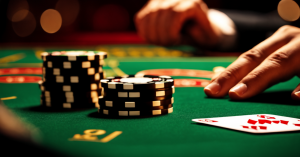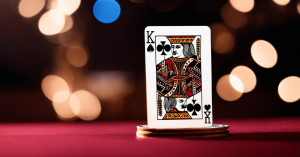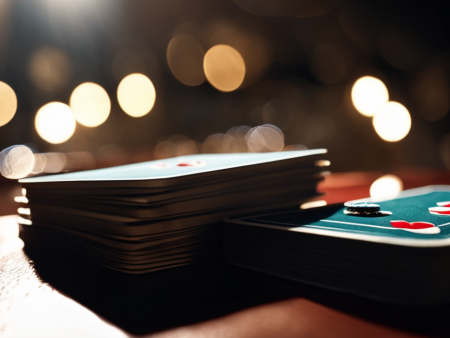
Blackjack is one of those classic casino games that blend strategy with a touch of luck. If you’ve ever been to a casino, you might have seen the flashing lights and heard the cheerful chatter around the blackjack tables. But how exactly do you get into the action? In this guide, we’ll dive deep into the world of blackjack, breaking down everything you need to know to get started and excel at this exciting game. Blackjack at a live casino online brings the authentic experience of a real casino directly to your screen, complete with live dealers and interactive gameplay. This format allows you to enjoy the thrill of the game from the comfort of your home, competing with other players in real-time. With live casino online, you can sharpen your skills and experience the excitement of blackjack without ever stepping into a physical casino.
The Basics of Blackjack
At its core, blackjack is a card game where the goal is to have a hand value closer to 21 than the dealer’s hand without going over. It’s a simple concept, but the strategies and nuances make it an intriguing game.
Understanding the Deck
Blackjack is typically played with one or more standard 52-card decks. The value of each card is straightforward:
- Number cards (2 through 10) are worth their face value.
- Face cards (Kings, Queens, and Jacks) are worth 10 points.
- Aces can be worth either 1 or 11 points, depending on which value benefits your hand more.
The Objective
The main objective in blackjack is to get as close to 21 as possible without exceeding it. If your hand’s total is higher than 21, you “bust” and lose the round. If you have a higher total than the dealer without busting, you win. If your total equals the dealer’s, it’s a push, meaning neither side wins.
Starting the Game

Dealing the Cards
The game begins with each player receiving two cards, as does the dealer. Players’ cards are typically dealt face up, while the dealer has one card face up (known as the “upcard”) and one face down (the “hole card”).
Initial Decisions
Once you see your initial cards, you’ll need to decide how to play your hand. This is where the strategy comes into play. Here’s a breakdown of the common actions you can take:
- Hit: Draw another card to improve your hand.
- Stand: Keep your current hand and end your turn.
- Double Down: Double your bet, receive one more card, and stand.
- Split: If you have two cards of the same value, split them into two separate hands and continue playing.
- Surrender: In some casinos, you can surrender your hand and lose only half your bet.
Strategies for Success
Basic Strategy
The key to winning at blackjack is not just luck but also strategy. Basic strategy involves making the optimal decision for every possible hand combination based on the dealer’s upcard. For example, if you have a hand totaling 16 and the dealer has a 7 showing, basic strategy suggests that you should stand.
Example: Jane’s Strategy
Jane, a novice player, learned the basics and quickly grasped the fundamental strategy. She discovered that, on average, following this strategy could reduce the house edge to less than 1%. So, whenever she faced a tough decision, she referred to her strategy chart to make the best move.
Card Counting
Card counting is a more advanced technique where players keep track of the cards that have been dealt to determine the likelihood of high or low cards remaining. While this method isn’t illegal, it’s frowned upon by casinos.
Example: Tom’s Card Counting Journey
Tom, an experienced blackjack player, used card counting to his advantage. He kept a mental tally of the high and low cards that had been played, which helped him make more informed decisions. Though it required a lot of practice and concentration, it paid off when he consistently won over several sessions.
Tips for Managing Your Bankroll

Setting a Budget
One of the most important aspects of gambling responsibly is managing your bankroll. Set a budget for how much you’re willing to lose and stick to it.
Example: Linda’s Budget Plan
Linda, a regular blackjack player, set a weekly budget for her gaming sessions. By sticking to this budget, she avoided the temptation to chase losses and enjoyed her time at the table without financial stress.
Knowing When to Walk Away
It’s also crucial to know when to walk away. If you’re on a losing streak or have reached your budget limit, it’s best to end your session and try another day.
Example: Mike’s Discipline
Mike learned the hard way that emotional decisions often lead to poor outcomes. By setting a strict limit on both wins and losses, he avoided the pitfalls of gambling on impulse and made more rational decisions.
The Role of Luck and Psychology
Embracing the Role of Luck
While strategy plays a significant role in blackjack, luck is also a factor. Sometimes, no matter how well you play, the cards just don’t fall your way. Embracing this aspect of the game can help you stay relaxed and enjoy the experience.
Example: Sarah’s Perspective
Sarah had a balanced approach to blackjack. She understood that luck was part of the game and didn’t let losing streaks affect her mood. This mindset helped her maintain a positive outlook and enjoy her time at the casino.
Psychological Edge
Understanding the psychology of blackjack can also give you an edge. Observing other players and the dealer’s behavior can provide insights into their potential strategies and decisions.
Example: Alex’s Observations
Alex paid close attention to the dealer’s body language and other players’ actions. By observing subtle cues, he could sometimes predict the dealer’s next move and adjust his strategy accordingly.
Common Mistakes to Avoid
Overbetting
A common mistake among new players is overbetting. It’s tempting to increase your bets after a few wins, but this can quickly lead to significant losses.
Example: Emily’s Overbetting Woes
Emily experienced a series of wins and decided to increase her bets significantly. Unfortunately, she lost all her gains and more. After this experience, she learned to keep her bets consistent and avoid impulsive decisions.
Ignoring Basic Strategy
Ignoring basic strategy is another mistake that can cost you money. Many players rely on luck rather than following a proven strategy.
Example: John’s Mistake
John initially ignored basic strategy and relied on gut feelings. This approach led to numerous losses. Once he started using a strategy chart, his results improved significantly.

Blackjack is an exciting game that combines luck with strategy. By understanding the basic rules, employing effective strategies, and managing your bankroll, you can enhance your chances of success. Remember, while you can’t control the cards, you can control how you play them. Whether you’re a novice or an experienced player, these tips and insights will help you navigate the game with confidence and enjoyment. So, the next time you find yourself at a blackjack table, you’ll be ready to put your newfound knowledge to good use and, hopefully, walk away with a smile.



